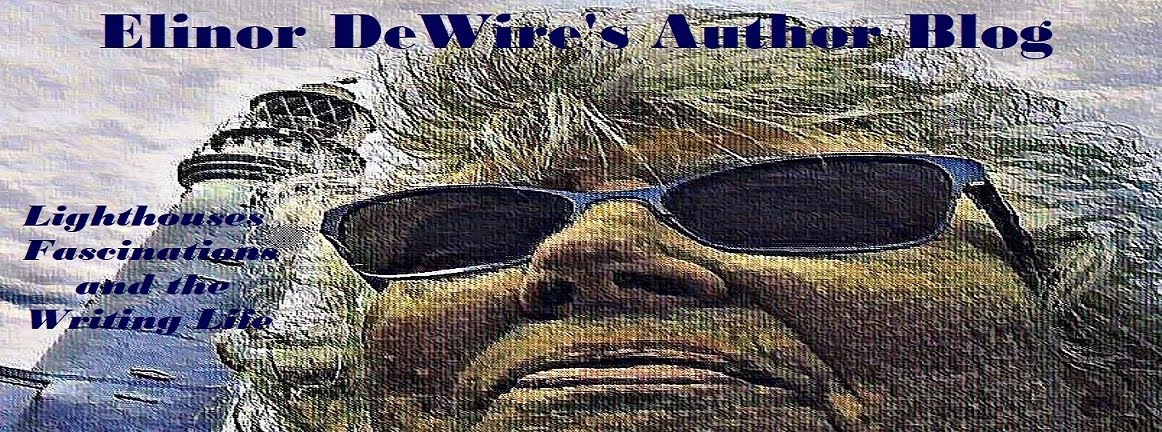 |
| Rany Jennette 1921-2001 |
“Lighthouses are not just
stone, brick, metal, and glass. There's a human story at every lighthouse;
that's the story I want to tell.”
Elinor DeWire
This is a quote I gave to someone; I don’t recall who and when. I may have said
it in a speech when one of the U.S. Postal Service series of lighthouse stamps debuted.
Or, it may have been given during an interview by a newspaper. Its origin
hardly matters. What is amazing is how quickly it has circulated on the
Internet.
I won’t say it’s gone viral…not yet…but somehow it got published and
gained traction. Of late, I see it almost everywhere on the web—on Facebook, Tumbler,
Twitter, Pinterest, Instagram, Goodreads, and more. It’s been adopted by a
number of websites and is now included on quotation websites.
I’m flattered, of course, but more than that I'm hopeful people will type the quote or my
name into a browser and find the real stories, the authentic history of
lighthouses. That is, after all, my primary goal—telling the history and lore
in the hopes people will gain a love for lighthouses and will want to work to save them. The stories
broadcast in the beams of lighthouses are what are important.
Here a lighthouse story that really does fit my quote. It's a tale of paint and brick and stone, and of a boy who learned a valuable lesson.
As a young boy, Rany Jennette lived at Cape Hatteras Lighthouse on the
Outer Banks of North Carolina. His father, Unaka Jennette, was keeper of the
light station from 1919 to 1937 and was one of the most respected men in the
Lighthouse Service. He often spoke with his children about the importance of hard
work, duty, and running a clean, shipshape light station.
One day when Rany saw his father deflating the tires of the station’s
automobile, he knew it was time to fetch the Lighthouse District Inspector. His
father would drive up the sandy beach to Norfolk (thus the deflated tires) and
pick up the inspector. They would return to Cape Hatteras Lighthouse, and the
inspector would go over everything at the station to be sure the place was
clean, in tip-top order, and properly operating. If everything was in excellent shape,
Unaka Jennette might be awarded the coveted “Efficiency Star” from the inspector.
 |
| Unaka Jennette, courtesy of Lighthouse Digest. |
Much of the light station had recently been painted, but the octagonal base
of the majestic lighthouse was still raw red brick and gray stone. Rany
wondered if it ought to be painted too. Perhaps his father had not had time to
do it. The boy fetched some paint to match the black and white spiral daymark
of the tower and began applying it to the base of the lighthouse.
He hadn’t gotten far on his paint job when his father came to say
good-bye before driving up to Norfolk to get the inspector. Unaka Jennette
stopped cold in his tracks when he saw what Rany was doing. His face took on a
scowl such as Rany had seldom seen. Rany explained that he was helping out with
the painting in hopes his father would win the “Efficiency Award.” Keeper
Jennette’s face registered a quick moment of understanding, then returned to a
scowl. He told his son to stop the paint job immediately and he would deal with
it when he returned from Norfolk.
Rany was confused. After his father left, his mother tried to explain the issue. She felt great
sympathy for the boy, knowing he was merely trying to help. She reminded Rany
that nothing could be done at the light station without first getting
permission and instructions from his father. She told Rany, in a very serious voice, that he had not done that. "The base of the lighthouse is not to be painted," she said. "It has always been red brick and gray stone."
Inspector King arrived and went over the light station with a white glove and a fine-toothed comb. He stayed the night as a guest and enjoyed Rany's mother's fine cooking. At dinner, there was no mention of the paint on the base of the lighthouse. Neither was there mention of it in Inspector King's official report. Instead, Keeper Jennette
was given high marks once again. The next day, Inspector King shook hands with everyone, including Rany, and got in the family car. Keeper Jennette drove him up the beach and back to Norfolk.
When Rany's father finally got home, he took his son aside and gave him a
serious reprimand about taking liberties at the light station without
permission. He then gave the boy a wire brush and set him to work removing the
paint from the base of the lighthouse.
Weeks later, Rany finished the job to his father’s satisfaction. It had been much easier applying the paint than removing it! Next time he had a good idea about doing anything around the light station, he would ask his father first.




























